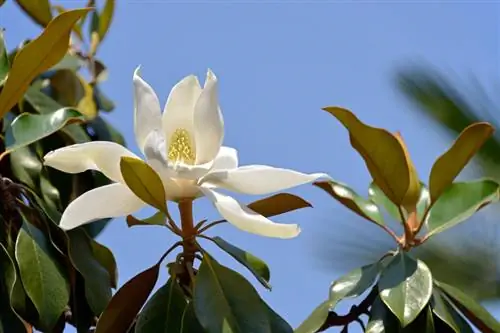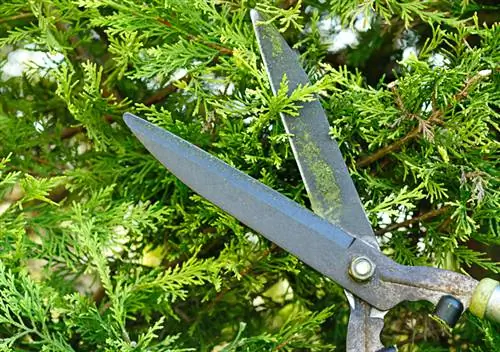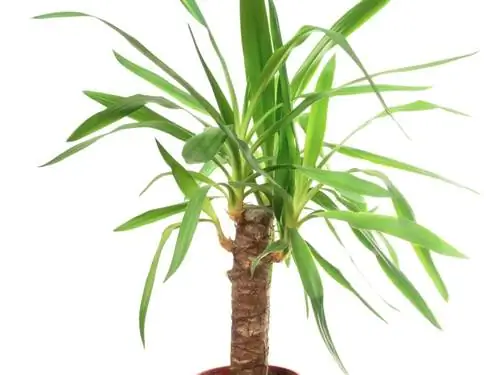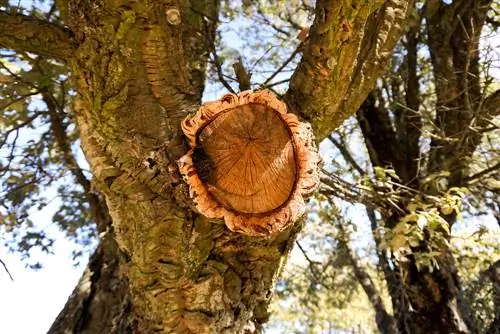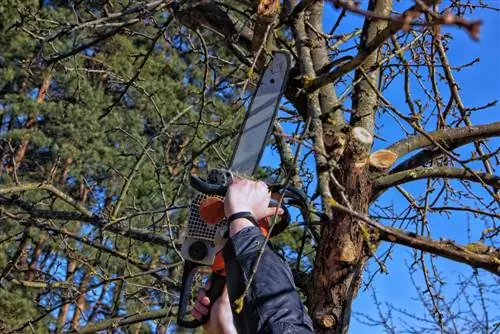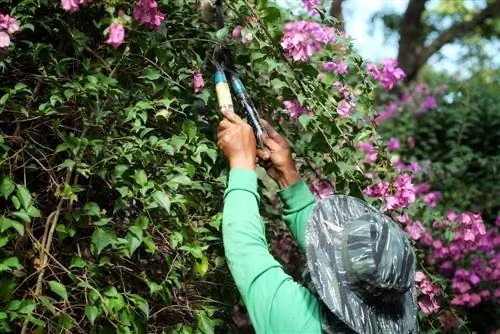- Author admin [email protected].
- Public 2023-12-16 16:46.
- Last modified 2025-01-23 11:20.
With its stately growth, its large flowers and its shiny foliage, it stands out impressively. But when it comes to cutting, it is different than most of the trees native to this country. How does cutting fit into the care of this plant?
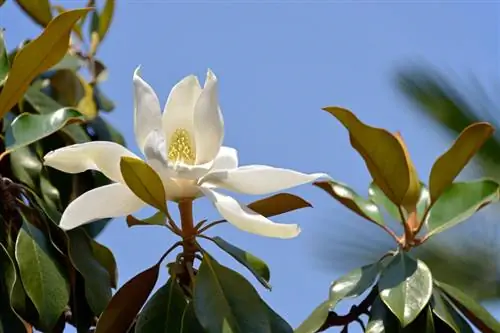
How to properly prune a Magnolia Grandiflora?
The Magnolia Grandiflora should be cut rarely and carefully, ideally at the end of March on a frost-free, overcast day. Remove crossing, inward-growing, old and diseased shoots. Use clean, sharp cutting tools and apply tree wax to larger cuts.
A cut should remain the exception
When dealing with Magnolia grandiflora, pruning should remain the exception. If cut carelessly, holes will quickly appear. Another consequence of being hasty is that the magnolia forms a broom after cutting. Basically, the following applies to her: she looks most beautiful and harmoniously designed without a cut.
Reasons for a cut
Although Magnolia grandiflora naturally grows beautifully, there may be reasons to prune it. A cut may be appropriate if:
- the crown is too sparse
- the growth habit doesn’t fit
- Strong-growing varieties should be kept small
- wide-growing varieties should be kept narrow
- the growth should become denser
When to cut?
This type of magnolia should be pruned - if at all - towards the end of winter. The best time for pruning is the end of March. On a frost-free and overcast day, you can pull out the pruning tools and get started!
How to cut?
A one-off radical cut is not recommended. However, this tree should be cut regularly and lightly. ‘Regularly’ can be understood to mean every one to two years. Then the plant shows good regenerative capacity if the cut was carried out correctly.
Should be removed: crossing, inwardly growing, old and diseased shoots. Clean and sharp cutting tools are used for this purpose. It is recommended to apply tree wax to interfaces that are larger than 2 cm in diameter.
It should also be noted: The flowers develop on last year's wood. If you cut back all of the annual growth, you will have to do without flowers in the summer. But in general, this species usually impresses with its ability to sprout again at the interfaces (even from the old wood).
Tips & Tricks
The Magnolia grandiflora, also known as the evergreen magnolia, usually covers interfaces skillfully all year round. The reason is their evergreen foliage.

